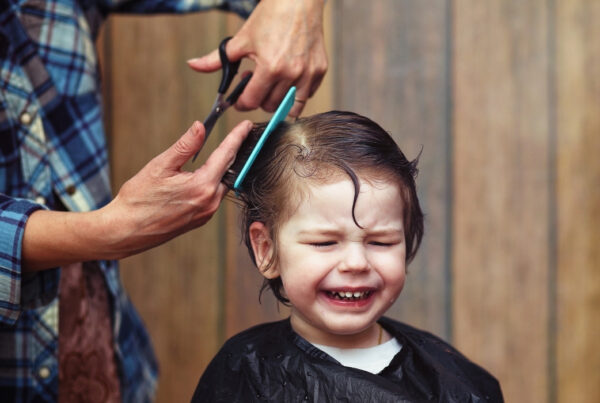Key Points:
- A sensory diet is a personalized plan of activities that helps children with autism manage sensory challenges.
- It includes targeted sensory input, such as movement, touch, or sound, at specific times to support focus, calm, and emotional regulation.
- Parents can work with professionals to create and implement an effective sensory diet at home and school.
Some days feel like a constant battle to help a child feel calm, focused, and comfortable in their own skin. For parents of children with autism, sensory challenges can make everyday activities overwhelming — but there are ways to help. Understanding what is a sensory diet for autism can offer hope and practical tools for families navigating these challenges.
What is a Sensory Diet for Autism and Does It Really Help?
Indeed, a sensory diet can make a big difference for children with autism. When asked, “What is a sensory diet for autism?”, the response is easy to understand: it’s an individualized plan of activities that deliver the sensory input a child needs throughout their day. Similar to how good nutrition supports physical health, a sensory diet provides the nervous system with the right kind of stimulation, enabling better self-regulation and engagement in daily routines.
A sensory diet may include specific activities, exercises, or environmental adjustments that address the child’s unique needs — whether they are over-sensitive, under-sensitive, or seeking certain sensory experiences.
Why Do Children With Autism Need a Sensory Diet?
Many children with autism experience sensory processing difficulties. This means their brains may have trouble handling the information coming in from their senses. Everyday sensations — like the feel of clothing tags, loud noises, bright lights, or even the movement of their own bodies — can feel overwhelming or, conversely, under-stimulating.
A sensory diet helps because it provides the type of sensory input their body craves, at the right intensity and time of day. It can help improve focus, decrease meltdowns, enhance motor skills, and make transitions smoother.
How Does a Sensory Diet Work?
A sensory diet works by giving the nervous system what it needs to stay balanced. These planned sensory activities are done regularly, not just when a child seems upset, to help prevent sensory overload or under-stimulation.
For example, a child who seeks movement might have trampoline time scheduled throughout the day, while a child who is sensitive to noise may benefit from quiet breaks in a calm area. The activities are chosen based on observation and, often, an occupational therapist’s guidance.
Examples of Sensory Diet Activities
Every sensory diet is unique because it depends on the child’s individual needs and preferences. However, here are some common types of activities that might be included:
Activities for Movement (Proprioceptive and Vestibular Input)
These activities help children who seek or avoid physical sensations of movement or pressure:
- Jumping on a trampoline or crashing into a pillow pile
- Pushing or pulling a weighted cart
- Swinging in a sensory swing
- Climbing or crawling through tunnels
Activities for Touch (Tactile Input)
For children sensitive to textures or who seek out touch:
- Playing with playdough, slime, or sand
- Brushing skin with a soft sensory brush (as guided by a therapist)
- Wearing weighted vests or blankets
- Exploring bins filled with beans or rice
Activities for Calming and Focus
For children who need help winding down or focusing:
- Deep breathing exercises or yoga stretches
- Listening to soft, rhythmic music
- Spending quiet time in a low-stimulation space
- Drinking through a straw or chewing crunchy foods for oral input
These activities are often spread throughout the day, at home, in school, or even in the car, depending on the child’s schedule and needs.
Who Can Help Create a Sensory Diet?
Parents should not feel like they need to figure this out alone. An occupational therapist (OT) is usually the best professional to help develop a sensory diet. The OT will observe the child, assess their sensory processing needs, and recommend specific activities tailored to their challenges and strengths.
Parents, teachers, and therapists can then work as a team to implement the plan consistently. Regularly adjusting the activities as the child grows and their needs change is also important.
Tips for Parents Implementing a Sensory Diet for Autistic Children
Starting a sensory diet can feel overwhelming, but it doesn’t have to be. Here are some tips to help parents succeed:
 Common Misconceptions About Sensory Diets
Common Misconceptions About Sensory Diets
Because the term “sensory diet” is not always well understood, some misconceptions exist. Let’s clear them up:
- It’s not a one-size-fits-all plan. What works for one child might not work for another.
- It’s not just for meltdowns. A sensory diet is preventative, keeping the child regulated before problems arise.
- It’s not a cure. A sensory diet supports better regulation and participation, but it does not eliminate autism or sensory challenges altogether.
When to Start a Sensory Diet
The sooner, the better. Parents may notice sensory difficulties in their child as early as toddlerhood. The earlier a sensory diet is introduced — with professional guidance — the more likely it can help prevent prolonged stress, improve learning, and support social interactions.
Even older children and teenagers can benefit from a sensory diet, as long as it is age-appropriate and considers their growing independence and preferences.
Get Expert Help with ABA Therapy in Maryland
A sensory diet often complements other therapies, such as speech therapy, social skills groups, and especially ABA (Applied Behavior Analysis) therapy. While the sensory diet focuses on regulation and comfort, ABA therapy focuses on teaching new skills, improving behavior, and fostering independence. Together, they can create a strong foundation for a child’s growth and development.
If you’re looking for additional support beyond a sensory diet, consider ABA therapy in Maryland through Crown ABA. ABA therapy helps children with autism build life skills, improve communication, and navigate behaviors in a structured and positive way. Together with strategies like a sensory diet, ABA can help children reach their full potential.
At Crown ABA, families in Maryland can find compassionate, experienced professionals ready to guide you and your child every step of the way. Don’t navigate this journey alone — reach out to us today to learn how ABA therapy can support your family.





